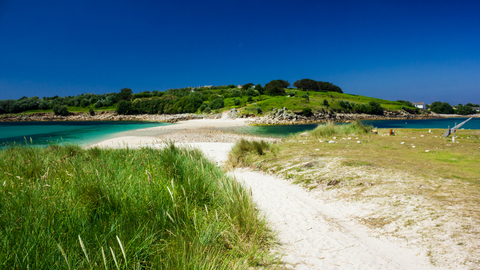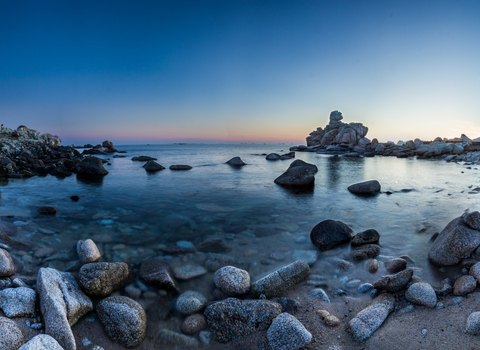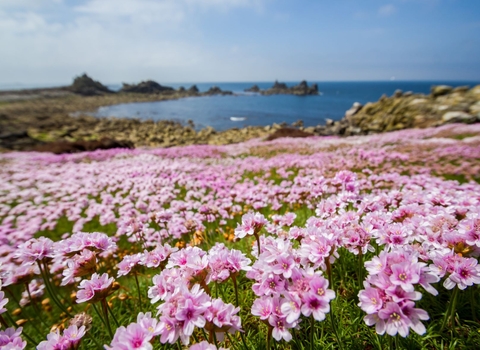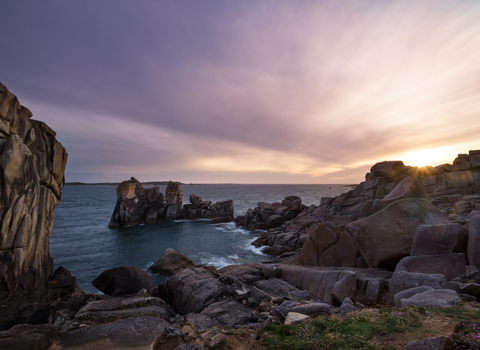Know before you go
Dogs
When to visit
Opening times
Open year roundBest time to visit
Spring & SummerAbout the reserve
The island supports the largest colony of lesser black-backed gulls in the archipelago, along with the only remaining colony of kittiwakes. Since the success of the Seabird Recovery Project (2013-17) that removed brown rats from the islands, the island is now home to breeding Manx shearwaters and storm petrels.
The lower-lying heathland at the southern end of the island hosts populations of the rare orange bird’s-foot and hairy bird’s-foot, along with rare lichen species including the ‘lung’ lichen Lobaria pulmonaria and golden-hair lichen. Between the two heathlands and along the coastal edge, maritime grassland is awash with carpets of pink thrift in the spring and summer. Here the nationally rare early meadow-grass can be found, along with uncommon species such as western clover. The small dunes at the western edge of the bar support dune grassland species including Portland spurge, wild thyme and common stork’s-bill. Centrally, the area is dominated by bracken. For lepidoptera enthusiasts, the nationally rare moth Nothris congressariella is found here - its lifecycle depends wholly on the nationally rare balm-leaved figwort, which is found among the scrub.
Past farming activities on the island included the planting of non-native hedges, which has led to the encroachment of pittosporum across the island. Over the last three years, we have removed a hectare of pittosporum to prevent damage to the fragile native habitats. Work has begun to link the maritime grassland areas to the south with those centrally and to the west of the island.
As you walk through the ‘Neck’ you will see a mosaic of grassland and scrub beginning to develop. Species like wild thyme, autumn lady’s-tresses and common bird’s-foot trefoil are thriving, whilst the scrub at different ages provides the Nothris moth with balm-leaved figwort.




